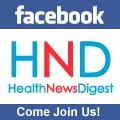 |
Forward-thinking healthcare systems, software engineers, medical practices and government agencies have tried to change that. Over the past several years, the US government, a major player on the national healthcare scene via Medicare, Medicaid and the Veterans Administration, has provided incentives to encourage healthcare practitioners to adopt and use electronic medical records (EMRs).
Motivated by these incentives, many practitioners have taken the first step to qualify for enhanced payments and get a better handle on patient data by purchasing an EMR system. They use it to record patient information. But most have not yet tapped the full potential of digital data and its power to become a force-multiplier by connecting practitioners with fellow healthcare professionals and patient information nationwide.
Managing Data and Managing Risks
In addition to incentive programs based on “meaningful use” of EMR, healthcare practitioners have the added motivation of a nationwide trend that is increasingly shifting risk from payers to providers. Not all insurers are shifting risk to healthcare practitioners, but the trend has become prevalent enough to drive a thirst for data, with providers seeking to manage risks better with greater access to patient and practice information.
The positive benefits of a fully connected healthcare system are considerable: better care coordination, superior decision-making capabilities, less duplication of diagnostic procedures, fewer medical errors and adverse reactions, more efficient practice management – all of which lead to better patient outcomes. And the good news is that these benefits are within reach for healthcare practitioners who have already begun the process by adopting an EMR system.
The Connected Healthcare Ecosystem
Through a series of public and private partnerships, an infrastructure for universally accessible data has evolved. In cooperation with the government-sponsored Nationwide Health Information Network (NwHIN) initiative, private companies have engineered open-source software solutions that enable standards-based, meaningful health information exchange at the regional and national levels.
In the spring of last year, NwHIN launched the Direct Project to identify and demonstrate a convenient, scalable, secure way for participants to exchange encrypted health data to verified recipients online. The project involved more than 200 participants from over 50 organizations nationwide, including EMR vendors, public and private medical organizations, systems integration specialists, integrated delivery networks, federal agencies, state and regional healthcare information organizations and other stakeholders. Focusing on technical standards and services to ensure secure data exchange, the Direct Project enabled safe, effective clinical information sharing.
Today, all US states have Health Information Exchange (HIE) programs in place with funding from the federal government to promote meaningful use of digital healthcare data. The goal of these exchanges is to help local providers realize the full potential of EMR in the data exchange process and improve the efficiency of patient care.
Moving from Data Producer to Data Consumer
Given these advances, individual providers and practices that have adopted EMR may want to now take the next step and move beyond being health data producers to becoming health information consumers. This involves breaking down the silos and actively sharing – and using -- health data between providers and organizations to improve decision-making, reduce risks and costs and achieve better outcomes through coordinated care.
Providers who are ready to take that step should begin the journey by assessing where they are now on the continuum toward a fully connected healthcare ecosystem. Is the practice ready to integrate electronic healthcare data into its daily operations – not just as a means to record patient data but as a way to receive, assess and share data from other providers and healthcare organizations?
Another consideration is the practice’s EMR vendor. There is a great deal of variation in states of readiness among vendors. For that reason, it’s a good idea to contact the EMR vendor and take a fresh look at the product’s technical capabilities. What does the EMR vendor’s product roadmap look like? Can users securely connect to existing local, state and federal data exchanges, share encrypted data and manage practice information?
Finally, the level of readiness varies from state to state. To explore ways to maximize the benefits of data sharing, it’s advisable to find out where the practice’s home state is in the implementation of a fully functional data exchange. A good place to start is the Department of Health and Human Services’ State Health Information Exchange Program page, which provides a list of local contacts here. (http://statehieresources.org/contacts/)
Realizing the Full Potential of Digital Data Exchange
To realize the full potential of digital healthcare data exchange capabilities, physicians and practice leaders must move beyond the role of data producer and become data consumers. They can reap the benefits when they have their patients’ complete medical histories conveniently available, enabling them to make better clinical decisions, avoid duplicative tests, coordinate care efficiently, manage risks and obtain superior outcomes.
While it may seem daunting to fully embrace the possibilities of digital healthcare data exchanges, there are products and infrastructures available today that have been years in the making, all designed to conveniently and securely facilitate information exchange, provide valuable patient health and risk management tools and enable truly coordinated care. For providers who have already taken the first step by integrating EMR into their practices, making a full commitment to being a part of the connected healthcare ecosystem offers measurable – and immeasurable – rewards.
Colin Barry is Chief Executive Officer of MEDfx, a leader in professional services, systems integration and software engineering that partners with innovative healthcare organizations nationwide. Find out more about MEDfx at http://www.medfx.com/.
###
Subscribe to our FREE Ezine and receive current Health News, be eligible for discounted products/services and coupons related to your Health. We publish 24/7.
www.HealthNewsDigest.com
For advertising/promotion, email: [email protected] Or call toll free: 877- 634-9180









